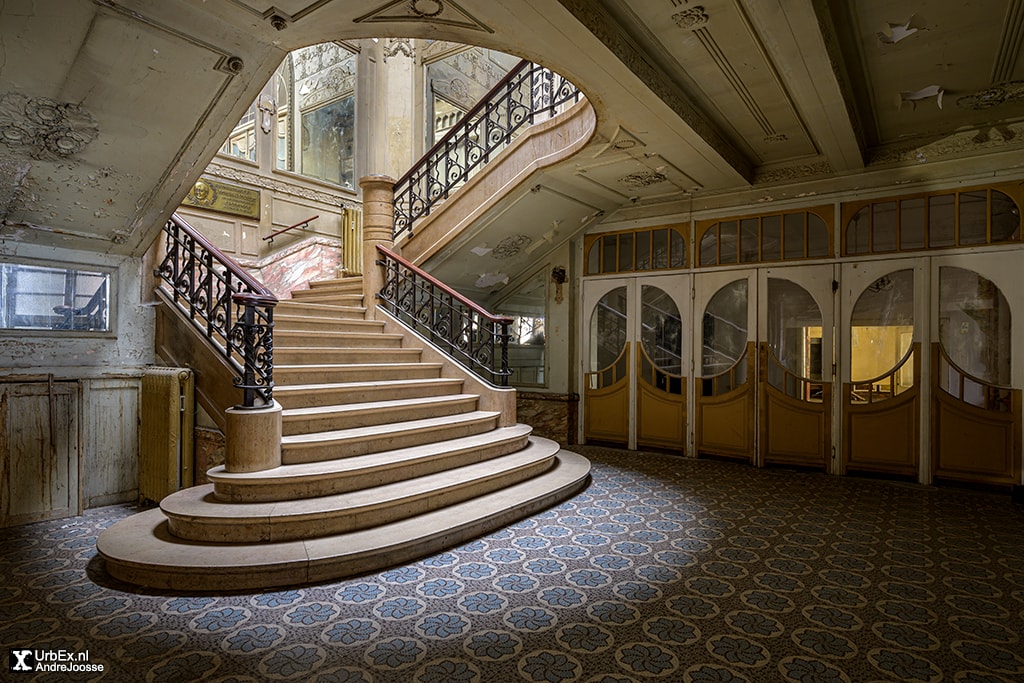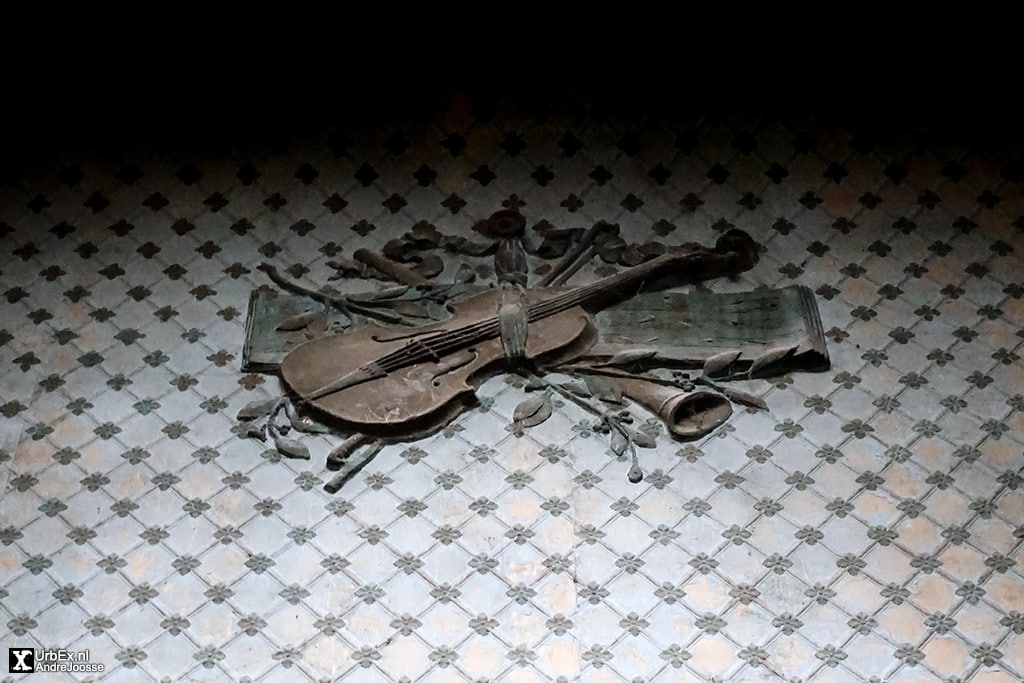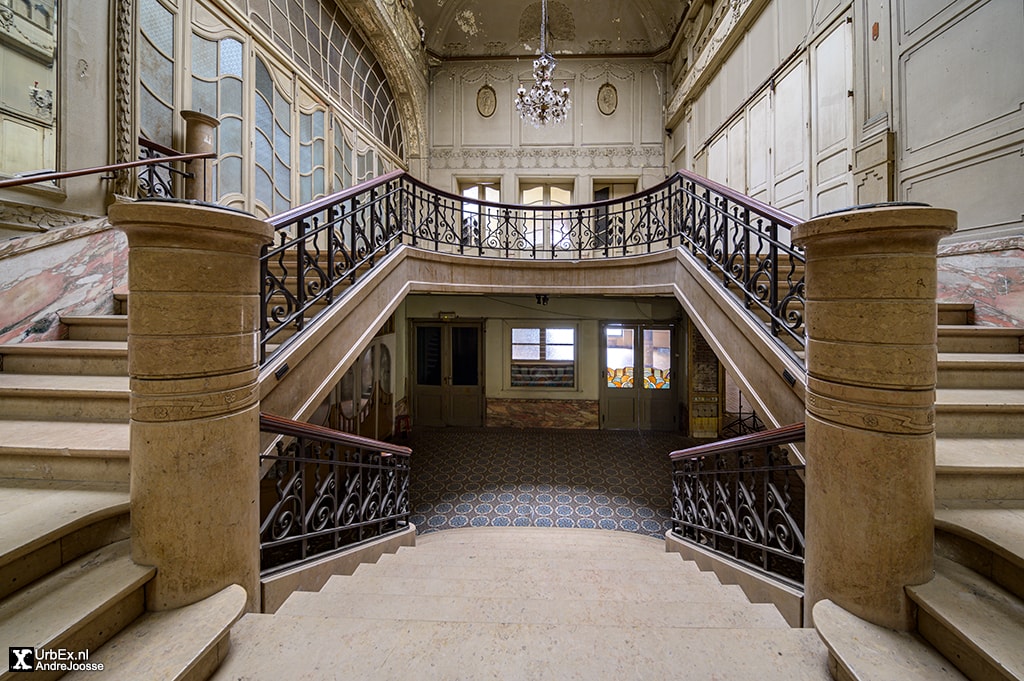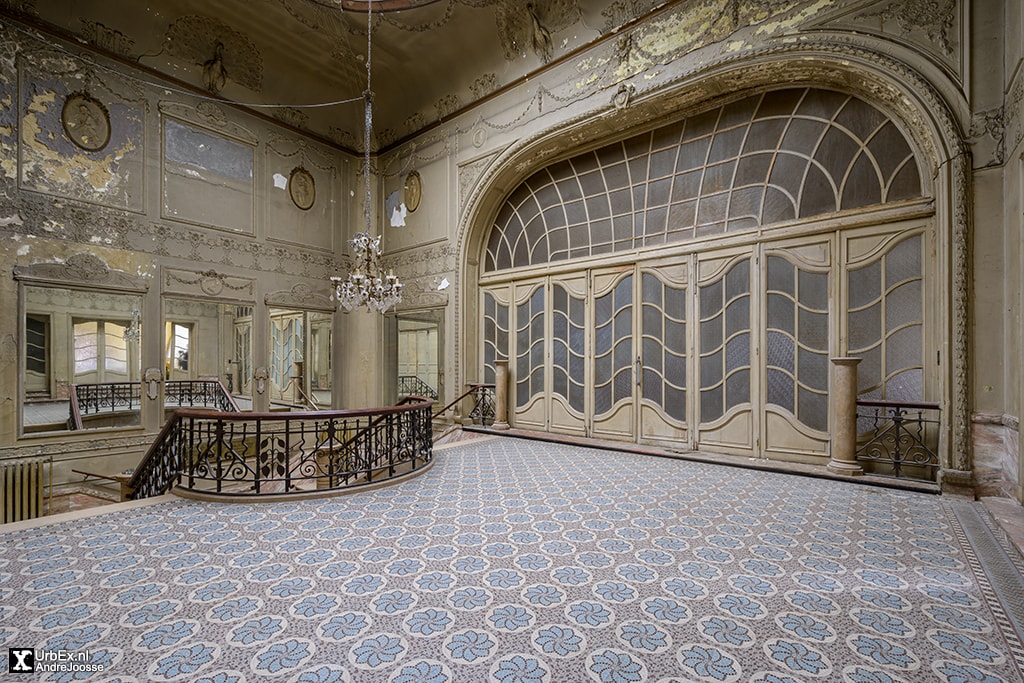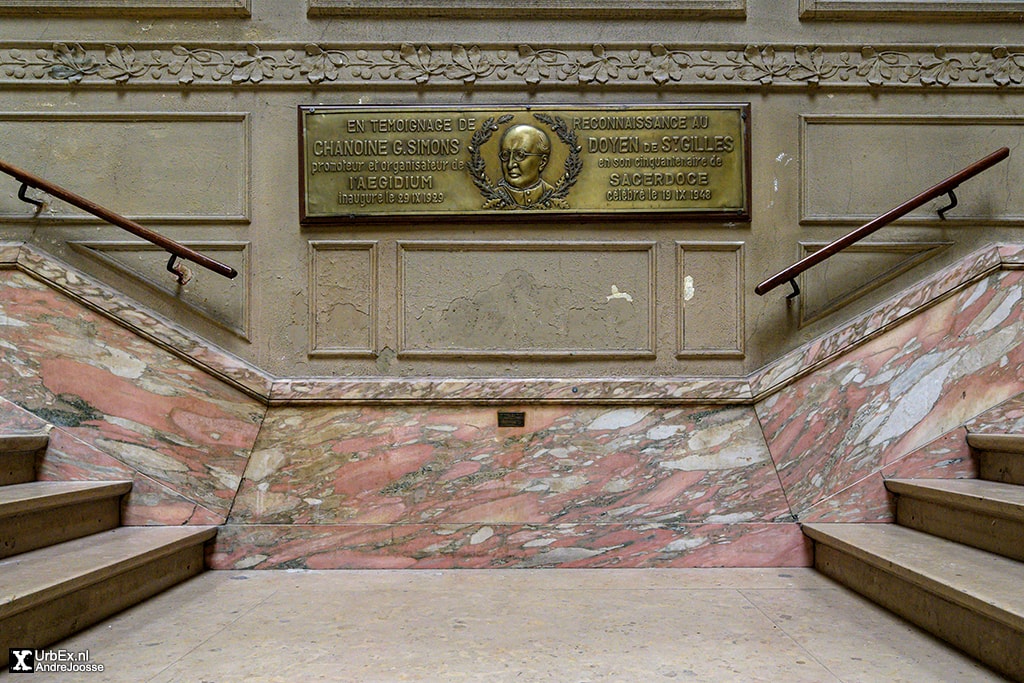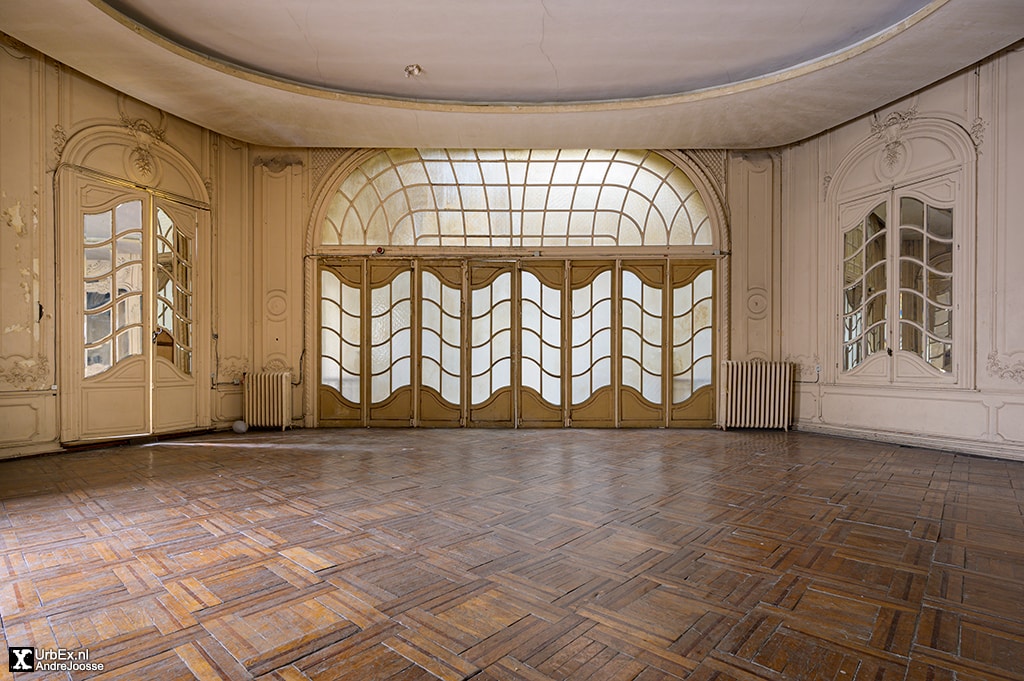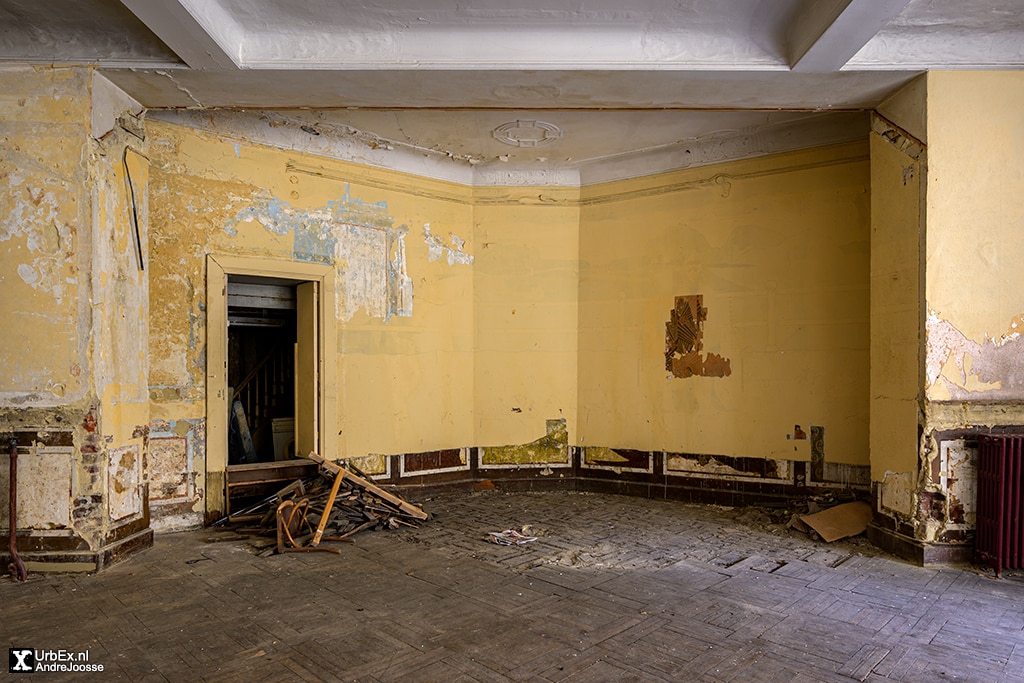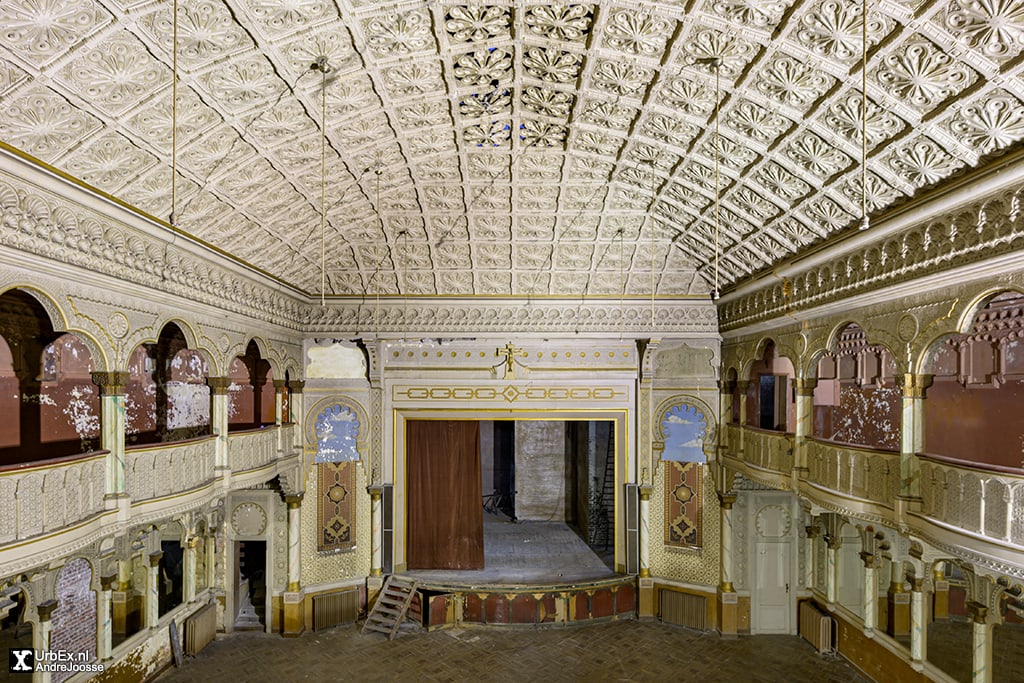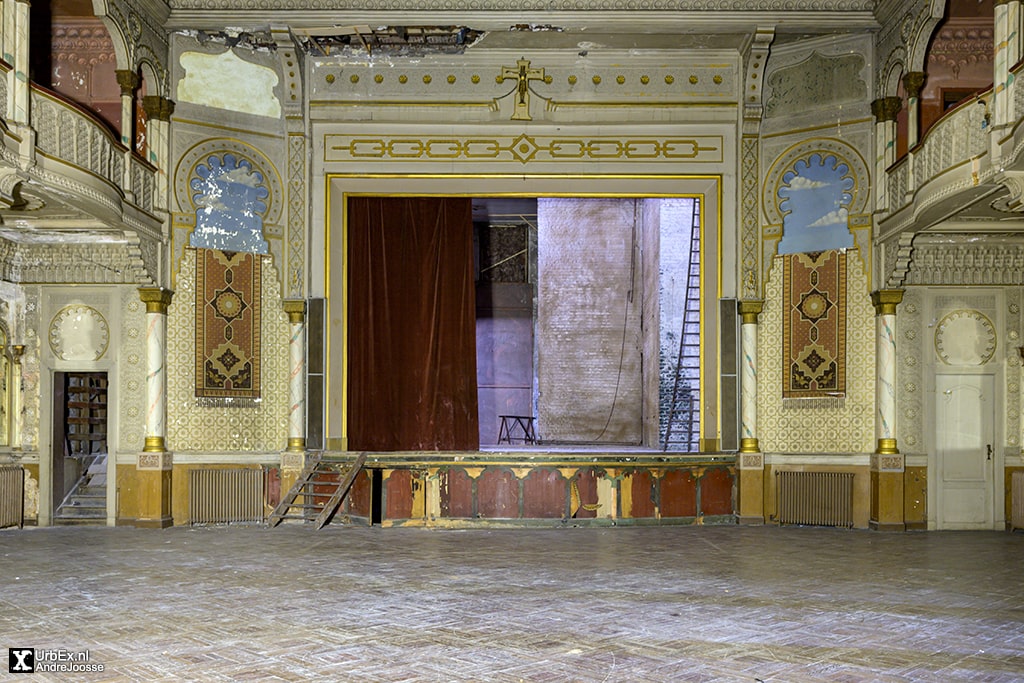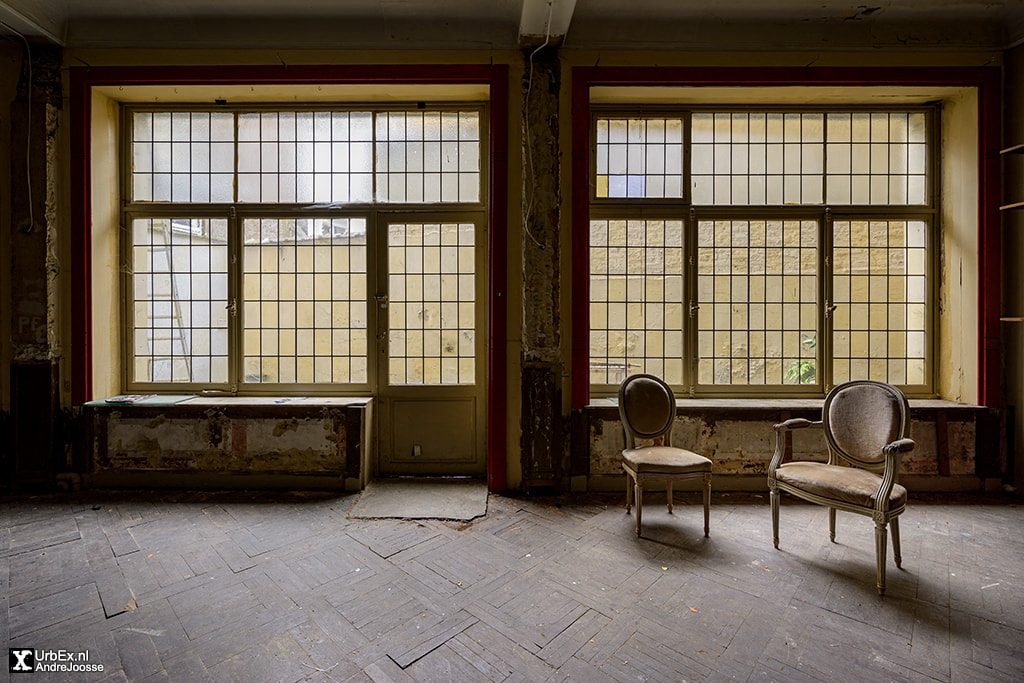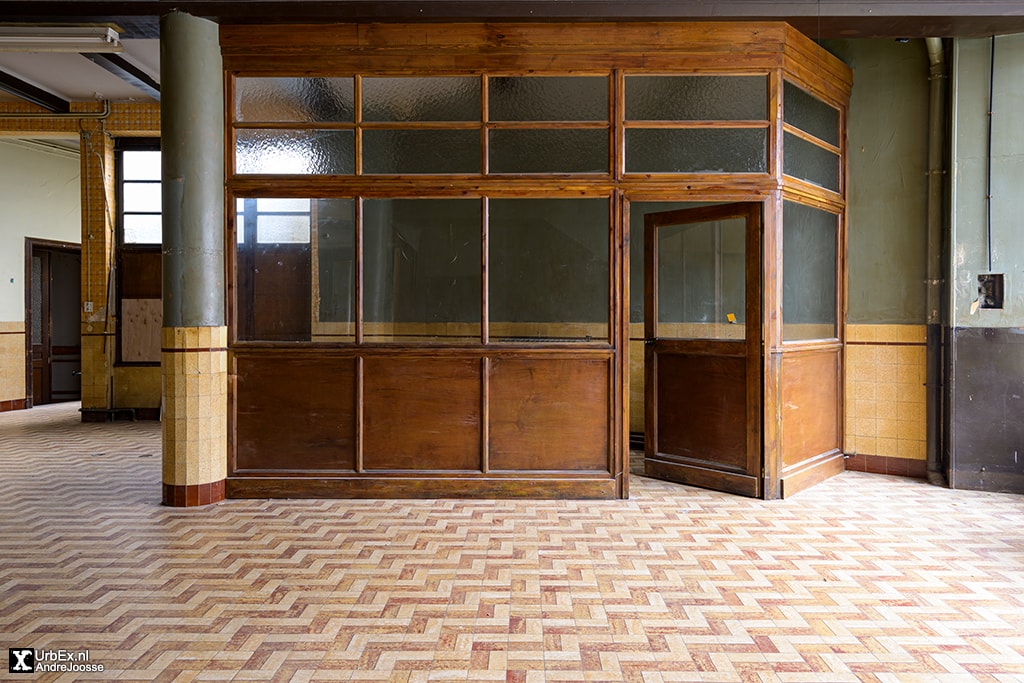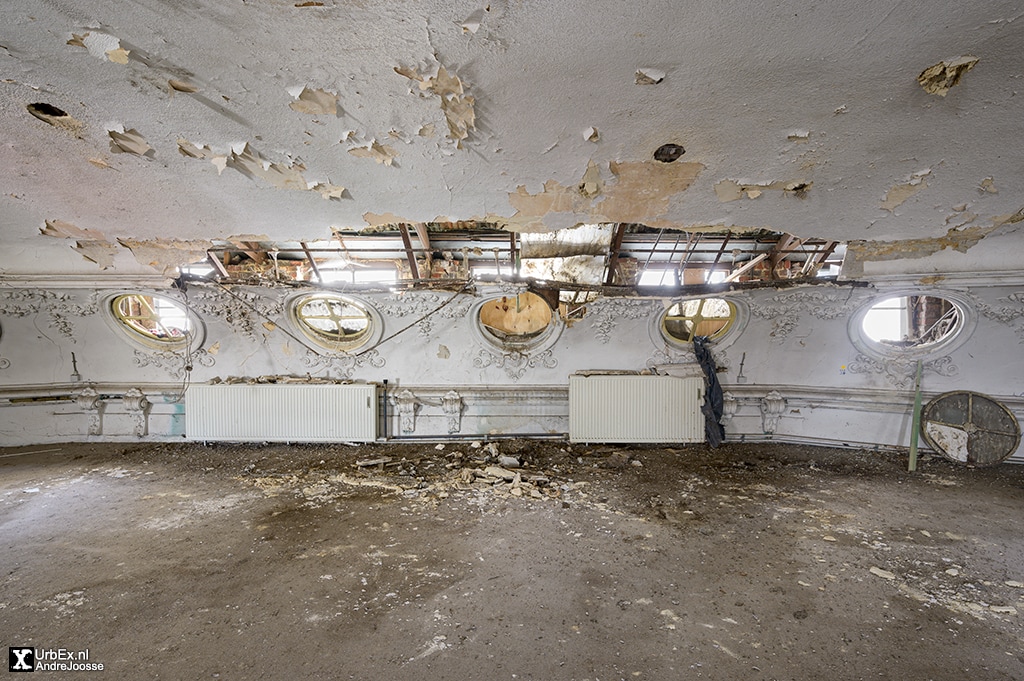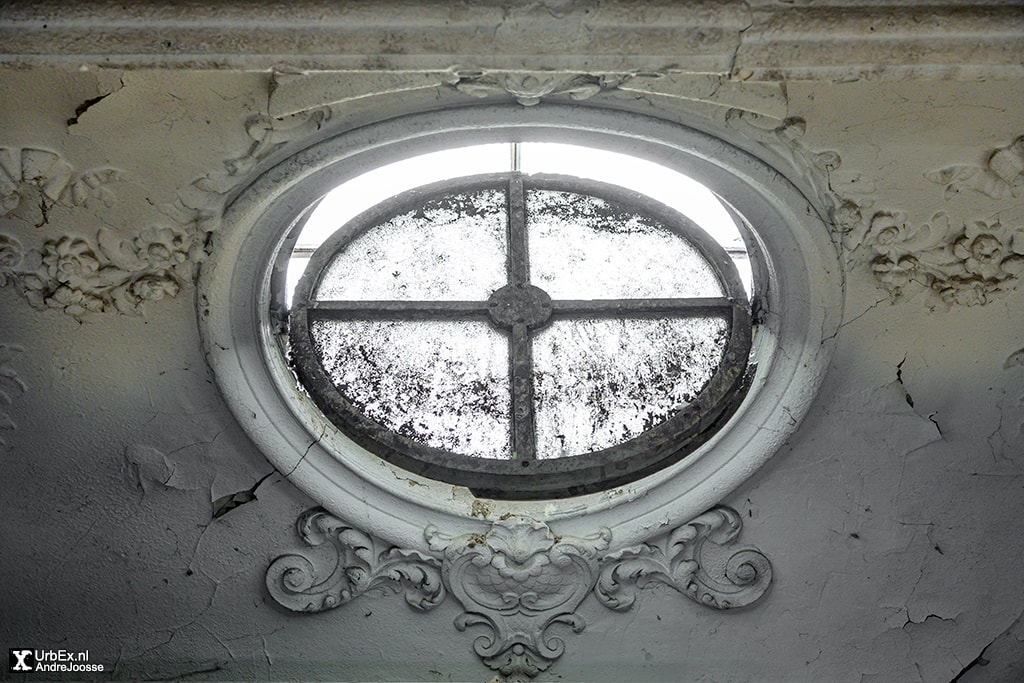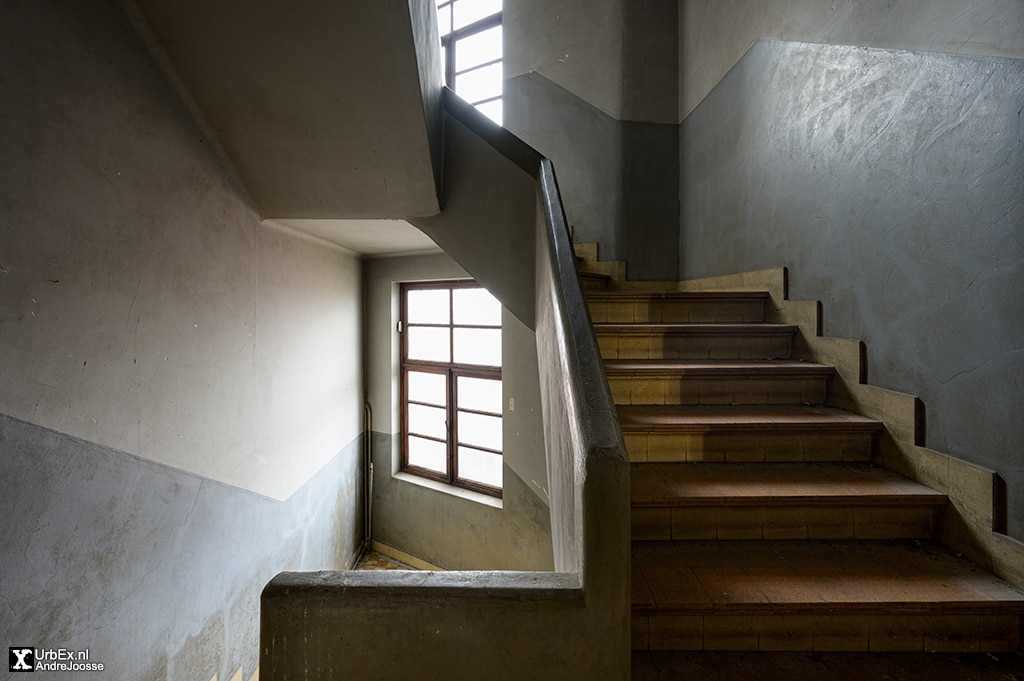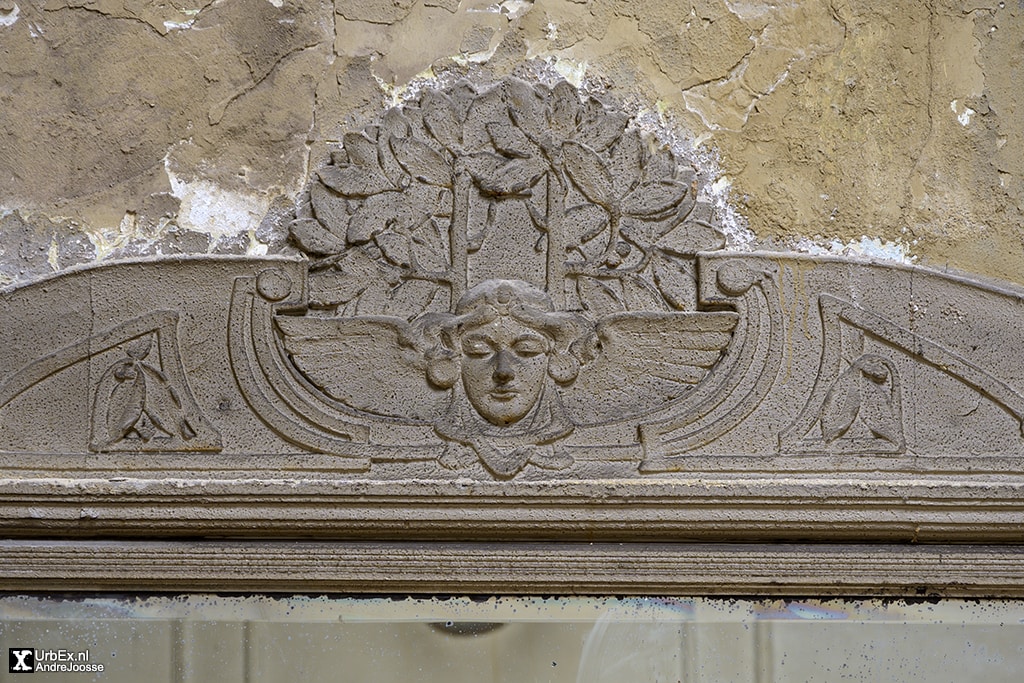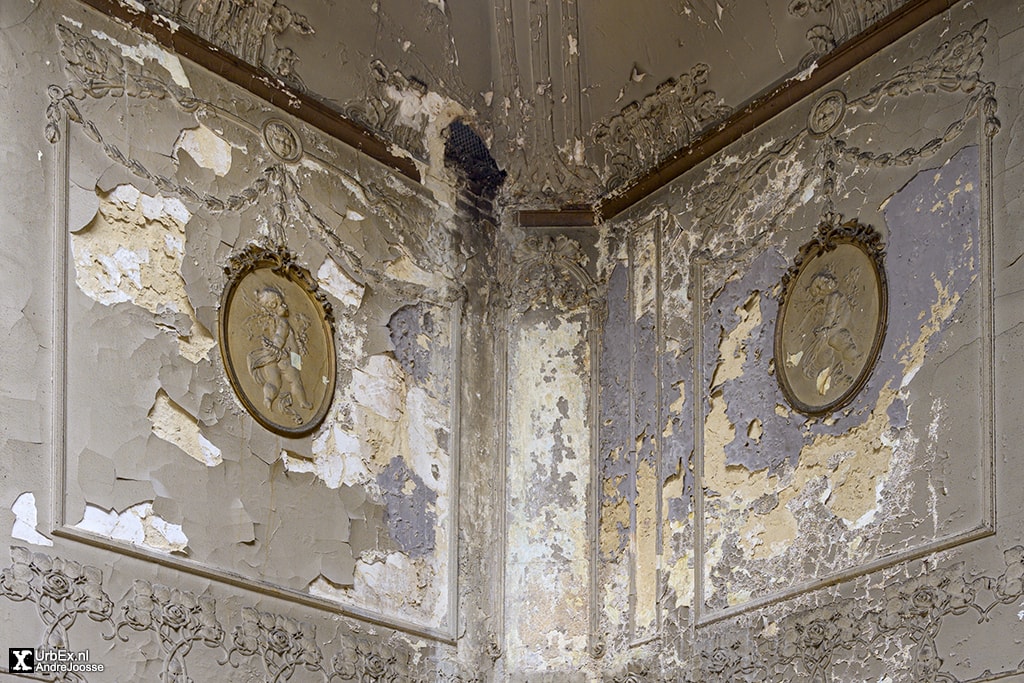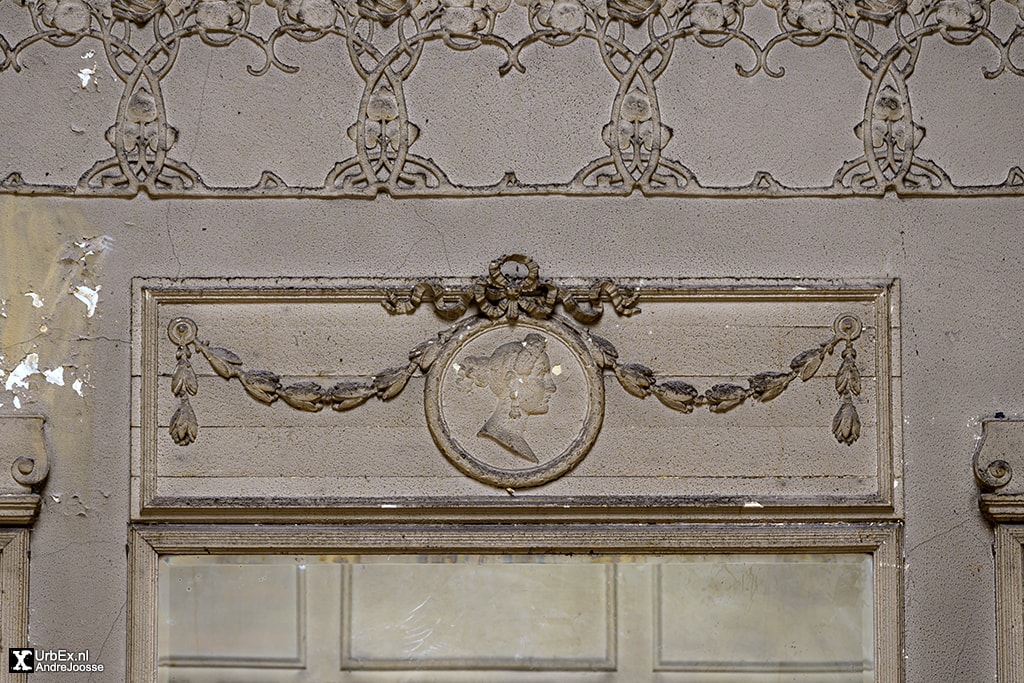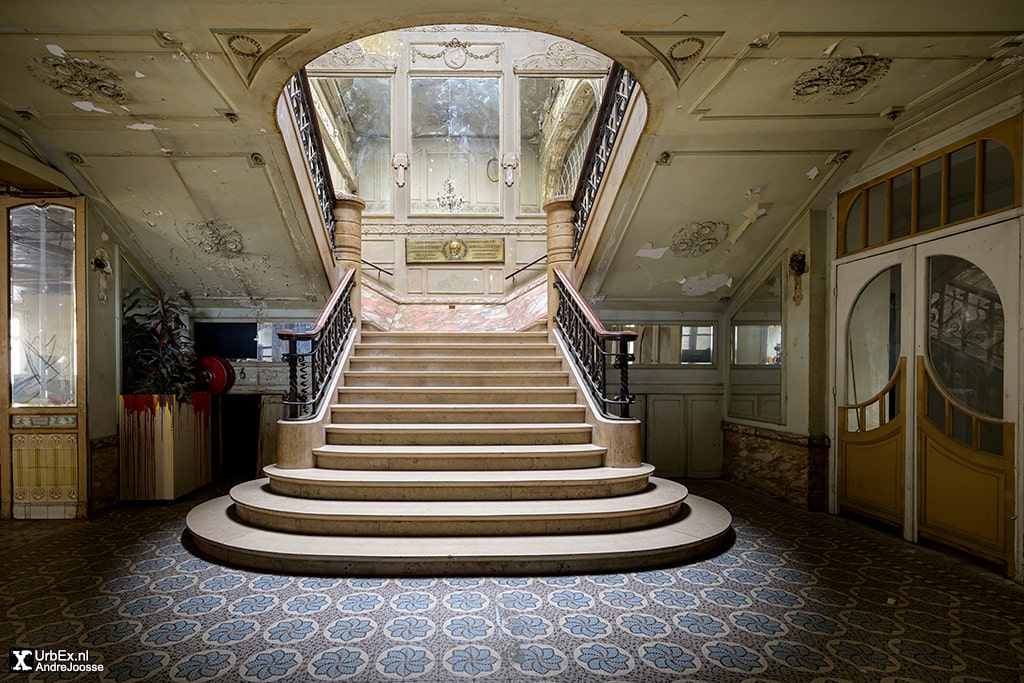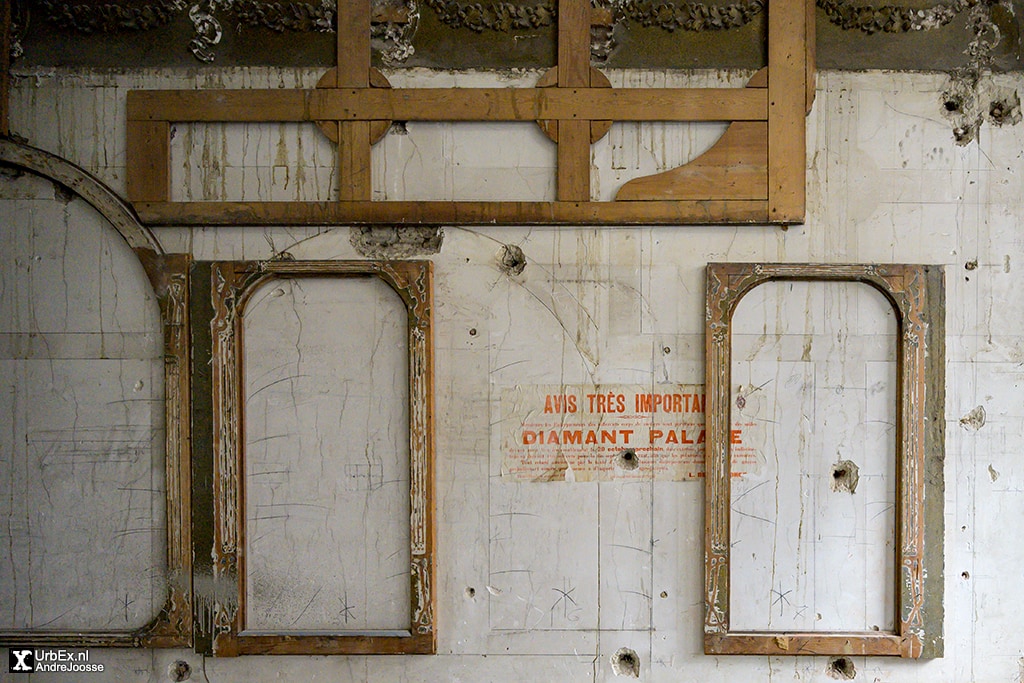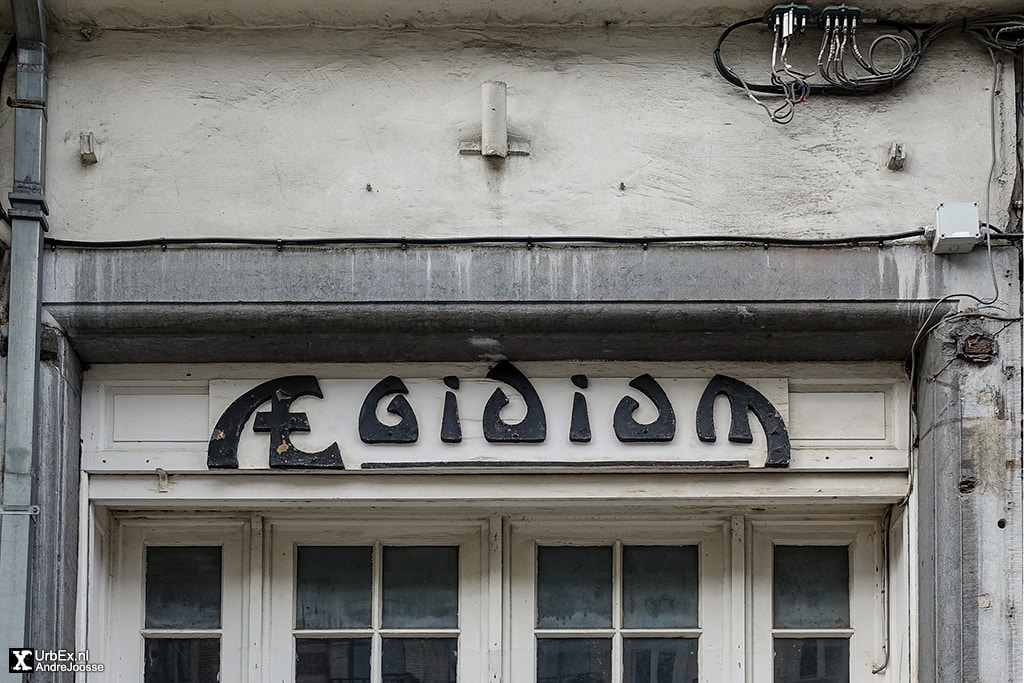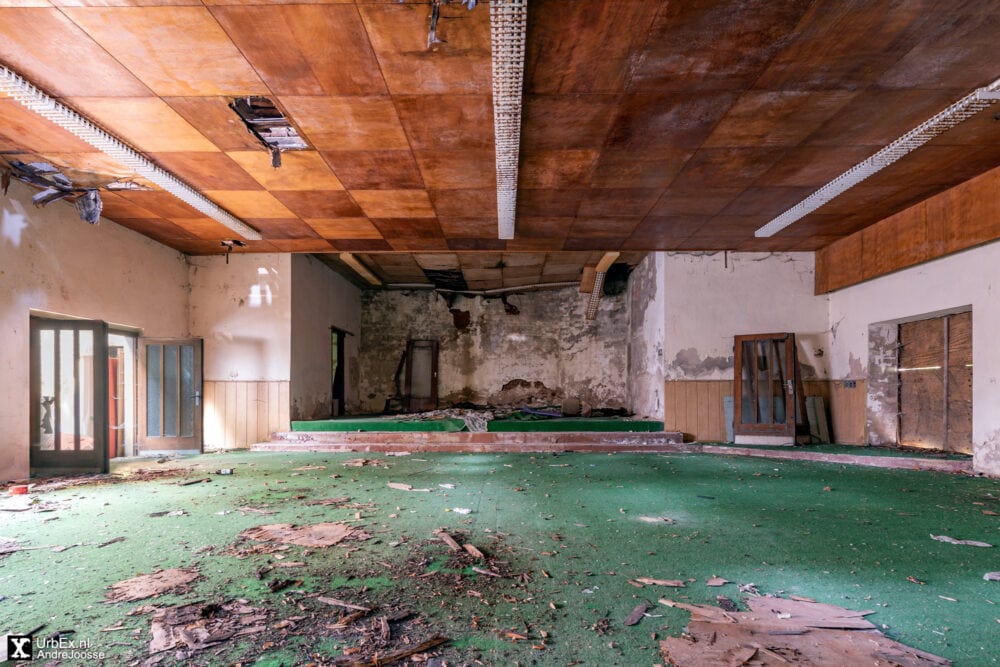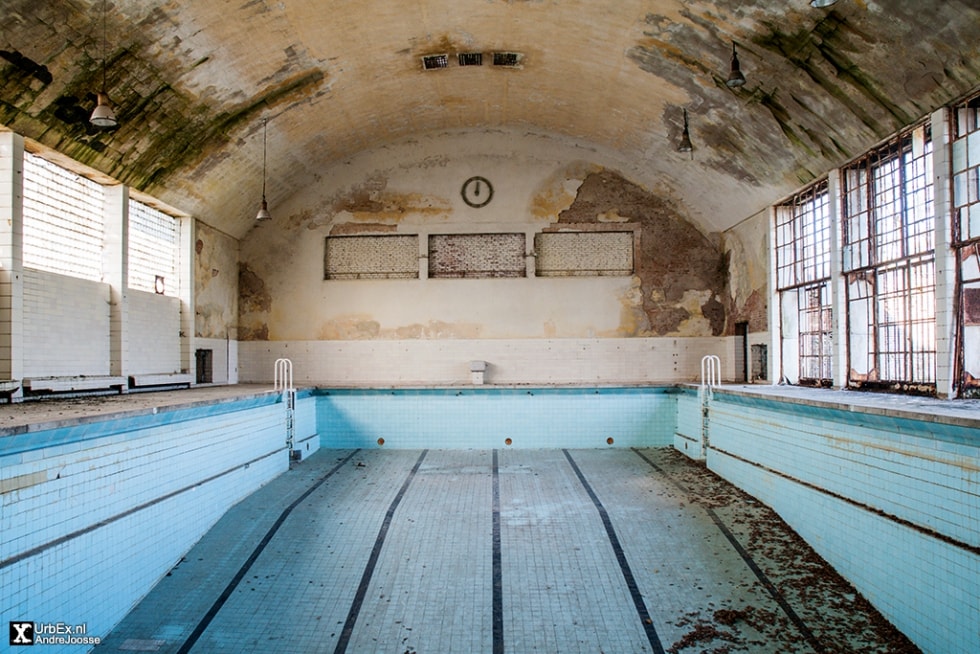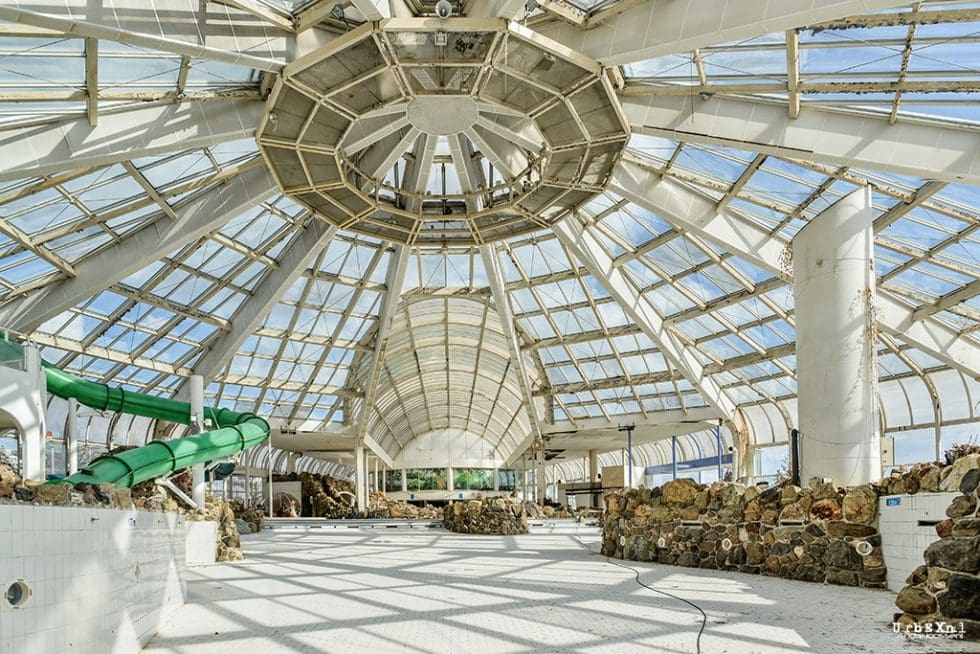Aegidium
THE ABANDONED THEATER IN BELGIUM
Constructed in 1905, the Aegidium theater in Brussels is a testament to the architectural vision of Guillaume Segers. Concealed behind its unassuming exterior lies a rich tapestry of interior designs. Having fallen into disuse in the 1980s, the theater is poised for a revival that will see it return to its former splendor.
The facade of the theater is built in Neo-classical style. Inside, I found an interior where Art Nouveau and Art Deco elements are merged together. For example, the foyer downstairs has Art Nouveau paneling with mirrors and figurative ceramic tiles from Helman. There is also a café, a smoking room and a winter garden. Construction started in 1905 and was completed at the end of 1906. Owner Léon Bejay-Dejonghe had bought a city block and found space in the middle for a concert hall.
The monumental stairwell with oval skylight leads to the two large rooms located on the first floor. Firstly, the spectacular Neo-Moorish style theater. Secondly, the smaller polygonal ballroom in the more common Louis XV style.
Diamant Palace
It eventually became the center of Brussels nightlife. It was known as ‘Egidium’, named after the patron saint of the city, Gillis. In 1913, he had the Moorish room decorated as a cinema and thereupon changed the name to ‘Diamant Palace’. After the death of the first owner Bejay-Dejonghe, Fernand Dierckx bought the building and turned it into a dance venue under the name ‘Panthéon Palace’.
Renovations
In 1929, Priest G. Simons acquired the building and commissioned architect Léon Denis to renovate it, adding a new dining room and projection booth. It became a hub for the community, hosting various religious and social events. Simons renamed the theater ‘Aegidium’ once more. In 1933, further renovations repurposed it as a cinema. The conference room was split into two with a concrete ceiling in 1956. By 1979, it had transformed into a community center, only to be abandoned in 1985. My visit to the theater occurred in 2020, shortly before its latest transformation.
